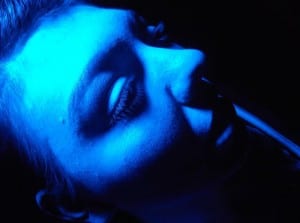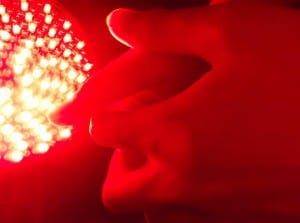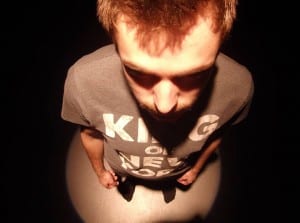After our feedback from our final performance, we were told to really strip our concept back and play with light and how light works on the body; creating different shadows.
This is one of our group members and we were interested in how we could manipulate the light to make it create different shadows on the face. We experimented with different parts of the body to see how the light reacts to the contours in particular we looked at eyes and faces as it was interesting to see the reflection of the light into the eye itself.
This light here is a light whereby it reacts to sound. So if someone was to clap and make noise it would change colour accordingly. We experimented with this and used clapping, stamping, our voices and a piano and we hope to incorporate this into our final performance. It would also encourage audience interaction and participation as they could clap and it would change colour.
We then began to experiment with direct spotlights onto people and how this would change the direction of shadows. A possible idea suggested was to have text being read out under a spotlight. However simple this may be it could be very effective and captivating to the audience as they truly listen to what is being said.


